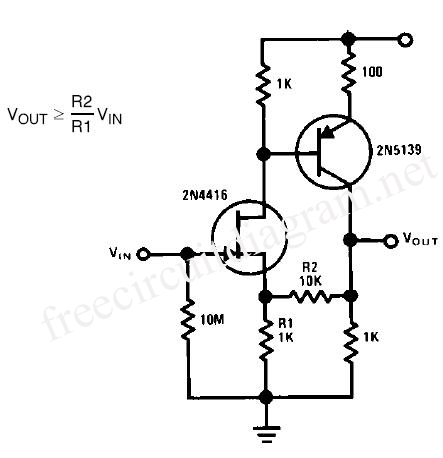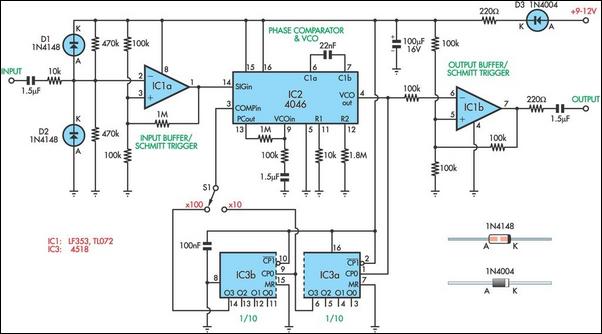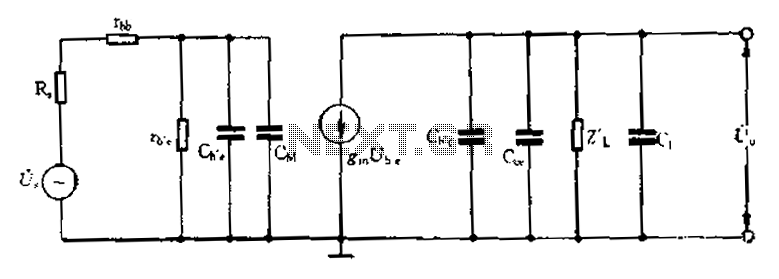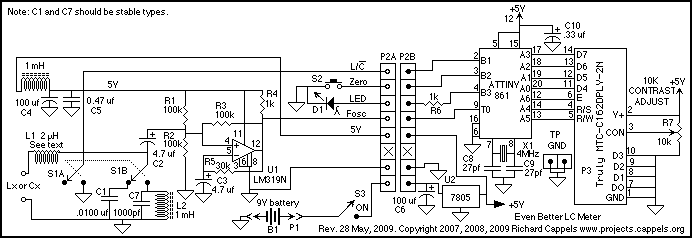
Capacitance multiplier
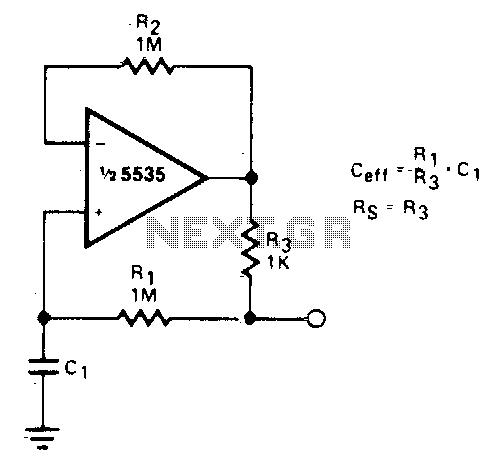
This circuit can be used to simulate large capacitances using small value components. With the values shown and C = 10 µF, an effective capacitance of 10,000 µF was obtained. The quality (Q) available is limited by the effective series resistance. Therefore, Rl should be as large as practical.
This circuit design leverages the principle of capacitance simulation through the use of smaller capacitors to achieve a much larger effective capacitance. By connecting multiple capacitors in a specific configuration, it is possible to create an equivalent capacitance that greatly exceeds the individual capacitor values. In this instance, using a capacitor of 10 µF, the circuit is able to simulate an effective capacitance of 10,000 µF.
The effective capacitance can be achieved by employing a network of capacitors in parallel or series, depending on the desired characteristics. In this scenario, the effective series resistance (ESR) plays a critical role in determining the performance of the circuit. A lower ESR will result in a higher quality factor (Q), which is essential for applications requiring efficient energy storage and minimal power loss.
To optimize the performance of the circuit, it is advisable to select the resistor Rl to be as large as practical. This will help minimize the impact of the effective series resistance on the overall performance of the capacitance simulation. The choice of resistor value should take into consideration the specific application requirements, including the frequency of operation and the load conditions.
In summary, this circuit effectively demonstrates how to simulate large capacitances using smaller components, providing a practical solution for applications that require high capacitance values without the need for physically large capacitors. The careful selection of component values and configuration is key to achieving the desired performance characteristics.This circuit can be used to simulate large capacitances using small value components. With the values shown and C = 10 µf, an effective capacitance of 10,000 µf was obtained. The Q available is limited by the effective series resistance So Rl should be as large as practical.
This circuit design leverages the principle of capacitance simulation through the use of smaller capacitors to achieve a much larger effective capacitance. By connecting multiple capacitors in a specific configuration, it is possible to create an equivalent capacitance that greatly exceeds the individual capacitor values. In this instance, using a capacitor of 10 µF, the circuit is able to simulate an effective capacitance of 10,000 µF.
The effective capacitance can be achieved by employing a network of capacitors in parallel or series, depending on the desired characteristics. In this scenario, the effective series resistance (ESR) plays a critical role in determining the performance of the circuit. A lower ESR will result in a higher quality factor (Q), which is essential for applications requiring efficient energy storage and minimal power loss.
To optimize the performance of the circuit, it is advisable to select the resistor Rl to be as large as practical. This will help minimize the impact of the effective series resistance on the overall performance of the capacitance simulation. The choice of resistor value should take into consideration the specific application requirements, including the frequency of operation and the load conditions.
In summary, this circuit effectively demonstrates how to simulate large capacitances using smaller components, providing a practical solution for applications that require high capacitance values without the need for physically large capacitors. The careful selection of component values and configuration is key to achieving the desired performance characteristics.This circuit can be used to simulate large capacitances using small value components. With the values shown and C = 10 µf, an effective capacitance of 10,000 µf was obtained. The Q available is limited by the effective series resistance So Rl should be as large as practical.

